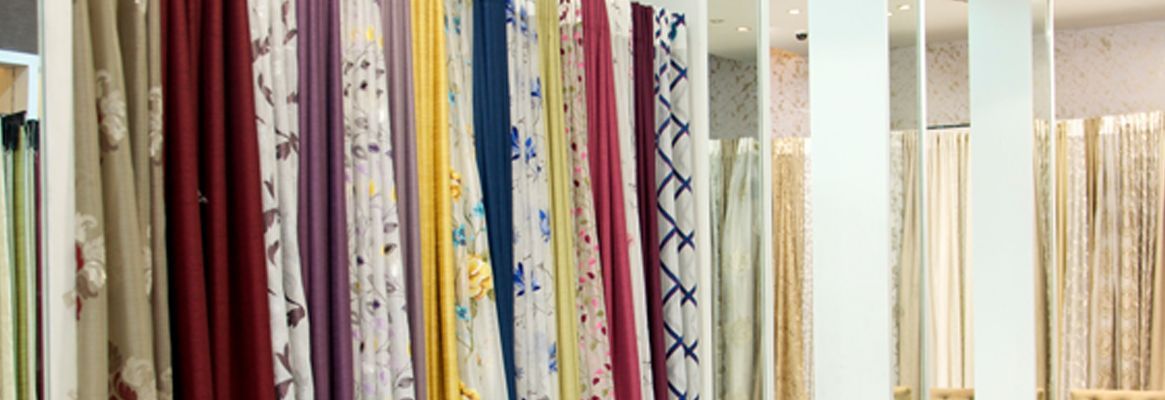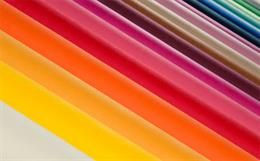The home textiles market in India is growing with leaps andbounds and in the process has attracted the attention of foreign brands thathave entered the Indian markets on their own or through joint ventures. Thishas happened due to the growing affluence levels of the Indian consumers whoare becoming more and more demanding by asking for exquisite home textilefabrics.
To know more about the current trends in this high profiletextile sub-sector, &sec=article&uinfo=<%=server.URLEncode(1928)%>" target="_blank">Fibre2fashionexclusively spoke to a few leaders from the home textiles industry. We spoke toMr Arun Garg, Managing Director of Maishaa and an official spokesperson of Maspar.Maishaa has an advanced integrated production line spread over an area of 640,000sq. m., the production facilities includes in-house designers, yarn processing,weaving, bleaching, dyeing, finishing and sewing units along with confirming toEuropean quality standards and environmental protection norms.
Maspar was set up in the year 2002 to showcase the best inhome fashion. Excellence has always been the buzzword here. Each product goesthrough controlled dyeing for colour fastness and is processed for quality.Manufacturing of chenille yarn, dyeing of yarn, fabric and made-ups, printing,quilting, cording, special sewing machines-the latest technology that existstoday, has been brought under one roof allowing Maspar to offer a guarantee onits products that encompasses almost everything related to home fashion.
We began by asking both about the actual market size forhome textiles in India and how is it divided between the organised andunorganized sector and the rate at which the market is growing, to which MrGarg said, "The domestic home textile market size, which is estimated atRs. 600 billion in 2007-08, is expected to touch Rs. 775 billion in 2010-11.Exports are expected to grow at a CAGR of 12.3 per cent from Rs. 120 billion in2007-08 to Rs. 170 billion in 2010-11. Home textile companies are also forayinginto domestic retail to reach the customers directly".
He added by saying, "Domestic companies are also buyingsimilar companies abroad, in order to tap the overseas market. Themanufacturing base is gradually shifting from the western hemisphere to the low-costcountries in the East. AT Kearney, a well-known international managementconsultancy, recently identified India as the the most attractive retaildestination globally. In India the unorganized sector is about 70% andorganized is approx 30%. According to a Knight Frank survey, India ranks fifth amongst the 30 emerging retail markets in the developing countries now".
Commenting on the question, the official spokesperson ofMaspar said, "There are not much studies available to judge the actualmarket size of home textiles in India, still the size could be approx Rs. 2,000crores including branded and non-brand turnover. The turnover of branded hometextiles in India would be around Rs. 1000 crores and the rest will be thenon-branded. The growth percentage of the organized sector is approximately 15-20percent and most of the share it gets is from unorganized home textile sector.So the growth of the organized sector is indirectly proportional to the growthof unorganized share as the growth in organized sector will come at the cost ofdecline in unorganized sector".
Next we asked them to comment on how the market for hometextiles has evolved in the last few years, to which Mr Garg explained bysaying, "Home textile continues its strong growth in the country, with anumber of new projects and the growing domestic market is attractinginternational companies too and there is competition in both the domestic andexport markets".
"China is not a threat for us, as China is unable to manufacture the qualities that we produce, because they use oldtechnology. India supplies over US$13 billion worth of textiles and apparel tothe world's markets and exports are growing rapidly as more and more buyersaround the world turn to India as an alternative to China. In 2005, spurred bythe global elimination of quotas, shipments to the EU soared by 30 percent andthose to the USA shot up by 34 percent and these increases are remarkable,given that EU imports from all sources rose by only 8 percent while US importgrowth was just 6 percent", he concluded by saying.
Spokesperson of Maspar said, "If we see the growth ofbrand in this sector, earlier all the companies used to export from foreignmarket but as the market in India grew, branding in home textiles also startedtaking shape here also. If we go back by ten years, Bombay Dyeing was the majorplayer in the market and no other brand tried to be a part of growingaspiration".
"But the exposure of media helped a lot in changing the taste and preferences of the people. Companies started taking a interest in home fashion sector. Brands like Potrico, Atmosphere and Maspar became major players in the sector. The home textile market evolved with factors like growth in market , increase in disposable incomes, new patterns of living and combined together it created the demand and aspirations of a good living style and so these brands also evolved with the market", he concluded by saying.
Next we asked them to reveal their companies plans with regards to expansion and product offerings in the next 1-2 years, to which Mr Garg said, "We are almost present in every category and Maishaa plans to launch its own exclusive stores in the Indian market and it will get into retailing other home furnishing products such as wall papers too and it also plans to have an international presence by launching itself in the global market".
"Maspar already has 56-60 items in every collection and we are using all the possibility available in textiles to make unique products and no other brand in this category in India or anywhere is offering this much of in-depth product offerings. We are continuously innovating different ways to use textile in various forms and beyond bed, bath, table, fabric and kitchen linen, Maspar will soon launch products for home and office stationary using different fabrics along with which we are also focusing more on customization of the product that suits the individual's taste sensibility", said the spokesperson from Maspar.
Moving ahead, we then asked them whether the Indian home textiles market had matured as much as the western ones in terms of product offerings, to which Mr Garg explained by saying, "There is immense scope for home textile exports from India, but only if, we can manufacture the right products. Many companies are expanding in the basic home products like bed linen and terry towels. Other product segments like upholstery, curtains, furnishings, etc are not really getting that much attention. The going is good now, but competition from China is very strong. India should focus on high value items, in which China does not operate and home textiles are attracting a number of foreign companies too".
"Amid growing international competitiveness, the reasons for Indias success are not hard to find as apart from China, no other country can match the size, depth, spread and competitiveness of the Indian textile and apparel industry as India has a complete supply chain, from a vast raw material supply to high quality finished products, with labour costs among the lowest in the world along with which Indian firms offer experience, entrepreneurship and design skills which Chinese firms find hard to match", he ended by saying.
The spokesperson from Maspar replied with a big 'No', but added by saying that, "It is at an evolving stage and it will take time to mature to international levels. Brands like Mascara have in-depth offering in western countries and we are selling there for the last 40 odd years and doing the same here, but still the marketing here is small, when compared to Western countries and to reach levels of western countries, it will take some time for the Indian market".
In concluding the interview we asked them to list the impediments in expanding in Indian markets and how they expect to overcome them, to which the spokesperson from Maspar replied by saying, "There is a need to educate on how to use the modern products made from textiles, exposing and creating the need to live in a certain way beyond bed sheets, pillow & quilts along with which the consumer needs to be informed on new age textile products".
He concluded by saying, "Also economics play a major if you were to compare with western countries, where the economy has grown in last 100 odd yrs and in India it has just started to grow, so until unless the over all proposition does not grow it is hard to have big textile market, but yes, one can emerge in a certain segment but not pan India".
"Yes, as everyone knows, Indian economy is much strong than any other country and there is a huge potential for every player, either domestic or international players. Now we are continuous seeing 100 percent growth rate in Maishaa. In India if you have good design, nice fabrics and best possible price, your brand become stronger and stronger and we are expecting very good response from the consumers", Mr Garg replied by saying.
References:
- &sec=article&uinfo=<%=server.URLEncode(1928)%>" target="_blank">http://maspar.co.in/aboutus.asp
- &sec=article&uinfo=<%=server.URLEncode(1928)%>" target="_blank">http://www.maishaa.com/aboutus.html







